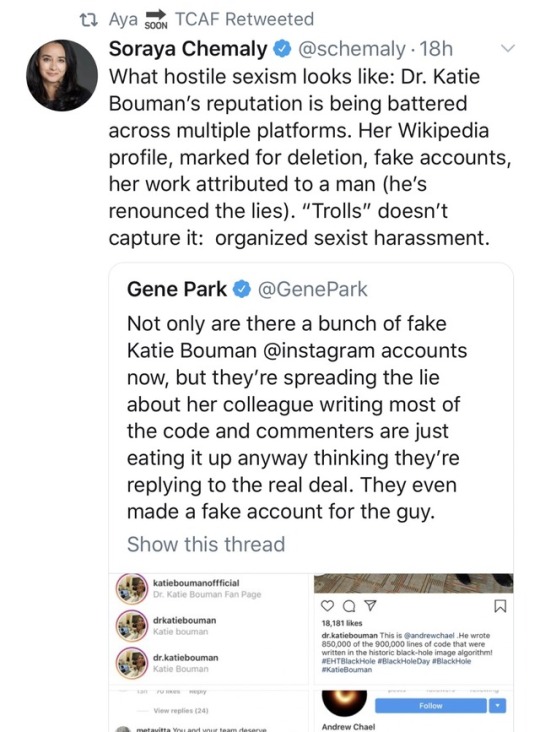Photo
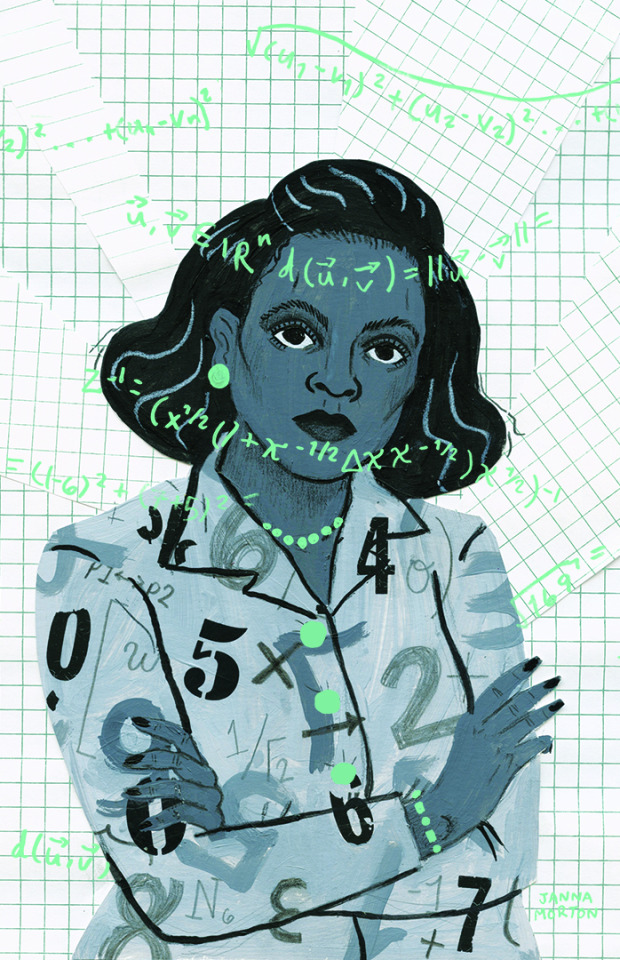
Since it’s the first day of Black History Month, it seems appropriate that I share this portrait of Marjorie Lee Browne, who was one of the first African-American women to receive a doctorate in mathematics. Quoted from Wikipedia:
Browne’s work on classical groups demonstrated simple proofs of important topological properties of and relations between classical groups. Her work in general focused on linear and matrix algebra. Browne saw the importance of computer science early on, writing a $60,000 grant to IBM to bring a computer to NCCU in 1960 – one of the first computers in academic computing, and probably the first at a historically black school. Throughout her career, Browne worked to help gifted mathematics students, educating them and offering them financial support to pursue higher education. Notable students included Joseph Battle, William Fletcher, Asamoah Nkwanta, and Nathan Simms. She established summer institutes to provide continuing education in mathematics for high school teachers. In 1974 she was awarded the first W. W. Rankin Memorial Award from the North Carolina Council of Teachers of Mathematics for her work with mathematics education.
I completed this illustration a while back for Women’s Work, a really awesome zine on women - past and present - working in STEM. The project was put together and curated by the wonderfully talented Shannon May and Celine Loup. You can learn more about the zine and see more art here.
*EDIT* A math teacher approached me about purchasing a print of this illustration for her classroom. I’ve made 7x10 prints available in my shop, here.
8K notes
·
View notes
Text
Remember the Women Who Made #Apollo50th Possible
As the world celebrates the 50th anniversary of the historic Moon landing, we remember some of the women whose hard work and ingenuity made it possible. The women featured here represent just a small fraction of the enormous contributions made by women during the Apollo era.
Margaret Hamilton, Computer Programmer

Margaret Hamilton led the team that developed the building blocks of software engineering — a term that she coined herself. Her systems approach to the Apollo software development and insistence on rigorous testing was critical to the success of Apollo. In fact, the Apollo guidance software was so robust that no software bugs were found on any crewed Apollo missions, and it was adapted for use in Skylab, the Space Shuttle and the first digital fly-by-wire systems in aircraft.
In this photo, Hamilton stands next to a stack of Apollo Guidance Computer source code. As she noted, “There was no second chance. We all knew that.”
Katherine Johnson, Aerospace Technologist
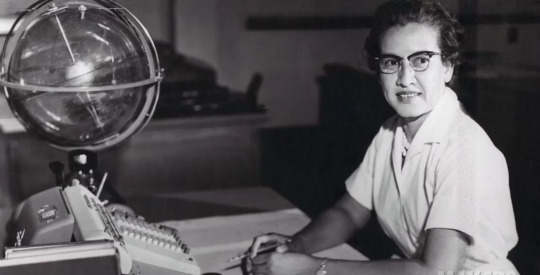
As a very young girl, Katherine Johnson loved to count things. She counted everything, from the number of steps she took to get to the road to the number of forks and plates she washed when doing the dishes.
As an adult, Johnson became a “human computer” for the National Advisory Committee for Aeronautics, which in 1958, became NASA. Her calculations were crucial to syncing Apollo’s Lunar Lander with the Moon-orbiting Command and Service Module. “I went to work every day for 33 years happy. Never did I get up and say I don’t want to go to work.“
Judy Sullivan, Biomedical Engineer
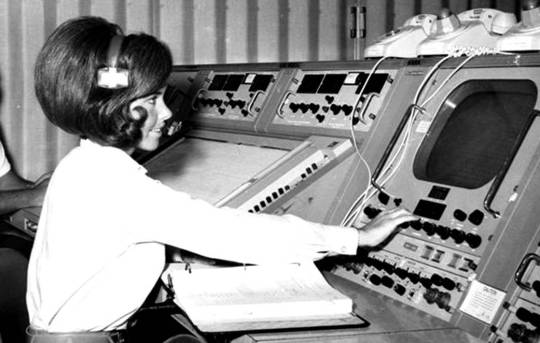
This fabulous flip belongs to biomedical engineer Judy Sullivan, who monitored the vital signs of the Apollo 11 astronauts throughout their spaceflight training via small sensors attached to their bodies. On July 16, 1969, she was the only woman in the suit lab as the team helped Neil Armstrong suit up for launch.
Sullivan appeared on the game show “To Tell the Truth,” in which a celebrity panel had to guess which of the female contestants was a biomedical engineer. Her choice to wear a short, ruffled skirt stumped everyone and won her a $500 prize. In this photo, Sullivan monitors a console during a training exercise for the first lunar landing mission.
Billie Robertson, Mathematician
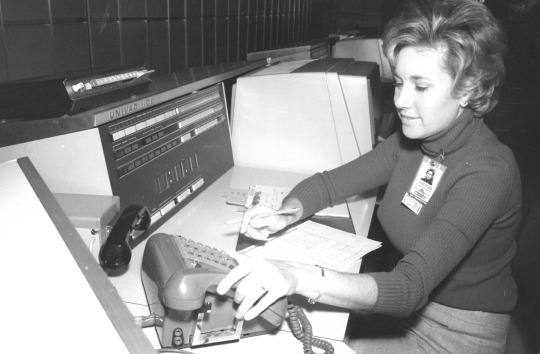
Billie Robertson, pictured here in 1972 running a real-time go-no-go simulation for the Apollo 17 mission, originally intended to become a math teacher. Instead, she worked with the Army Ballistic Missile Agency, which later became rolled into NASA. She created the manual for running computer models that were used to simulate launches for the Apollo, Skylab and Apollo Soyuz Test Project programs.
Robertson regularly visited local schools over the course of her career, empowering young women to pursue careers in STEM and aerospace.
Mary Jackson, Aeronautical Engineer
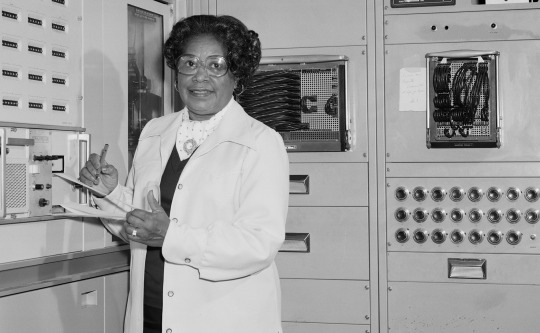
In 1958, Mary Jackson became NASA’s first African-American female engineer. Her engineering specialty was the extremely complex field of boundary layer effects on aerospace vehicles at supersonic speeds.
In the 1970s, Jackson helped the students at Hampton’s King Street Community center build their own wind tunnel and use it to conduct experiments. “We have to do something like this to get them interested in science,” she said for the local newspaper. “Sometimes they are not aware of the number of black scientists, and don’t even know of the career opportunities until it is too late.”
Ethel Heinecke Bauer, Aerospace Engineer
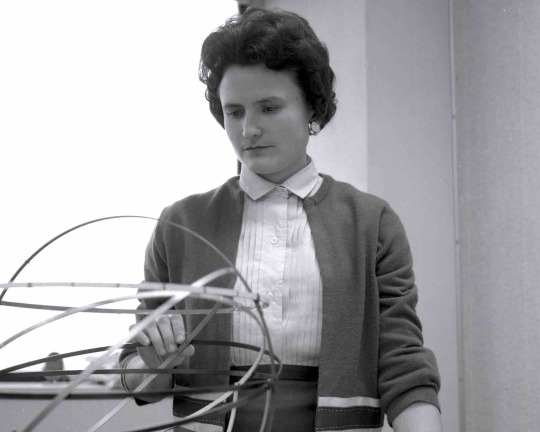
After watching the launch of Sputnik in October 1957, Ethel Heinecke Bauer changed her major to mathematics. Over her 32 years at NASA, she worked at two different centers in mathematics, aerospace engineering, development and more.
Bauer planned the lunar trajectories for the Apollo program including the ‘free return’ trajectory which allowed for a safe return in the event of a systems failure — a trajectory used on Apollo 13, as well as the first three Apollo flights to the Moon. In the above photo, Bauer works on trajectories with the help of an orbital model.
Follow Women@NASA for more stories like this one, and make sure to follow us on Tumblr for your regular dose of space: http://nasa.tumblr.com.
15K notes
·
View notes
Photo



Call to action to help native Hawaiians protect Mauna Kea
“Call Governor IGE’s office 808-586-0034
Call lieutenant Gov Josh Green’s office 808-586-2211
Tell then to immediately halt construction
Tell Governor IGE and UH President David Lassner to Stop construction of TMT - Email David Lassner at [email protected]“
Signal Boost and call
6K notes
·
View notes
Text
#1yrago Study reveals YouTube commenters hostile to women scientists

A researcher reviewed 23,005 comments left on videos about science and related topics. You’ll never guess what they found out about how YouTubers view women. Adrianne Jeffries, quoting Inoaka Amarasekara:
https://boingboing.net/2018/07/13/study-reveals-youtube-commente.html
17 notes
·
View notes
Text
The science world is freaking out over this 25-year-old's answer to antibiotic resistance
102K notes
·
View notes
Photo

Learn about some of the science and mentorship programs in/near New Haven that support truly AMAZING young black girls here:
EVO (https://evolutions.peabody.yale.edu/people/senior-spotlight),
Guilford ABC (http://www.guilfordabc.org/ ),
LEAP (https://www.leapforkids.org/afterschool-program),
and ACCESS (https://m.facebook.com/access4kidz/reviews)
You can read more about Black Yale Astro/Physics here http://www.stsci.edu/~lchambers/HistoryKeepers.pdf
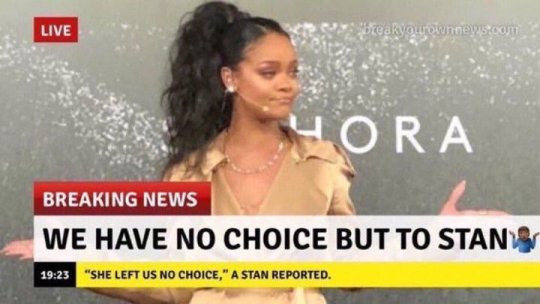
4K notes
·
View notes
Link
London-based student Lewis Hornby is a grandson on a mission. When he noticed that his dementia-afflicted grandmother was having trouble staying hydrated, he came up with Jelly Drops—bite-sized pods of edible water that look just like tasty treats.
Each of these colorful “candies” is made up of mostly water, with gelling agents and electrolytes making up just 10% of their composition. Available in a rainbow of colors and presented in packaging reminiscent of a box of chocolates, Jelly Drops are an easy and engaging way to avoid dehydration—a common problem for those suffering from degenerative neurological diseases.
“It is very easy for people with dementia to become dehydrated,” he explains. “Many no longer feel thirst, don’t know how to quench thirst, or don’t have the dexterity to drink.” With this in mind, Hornby set out to find a solution. In addition to seeking advice from psychologists and doctors, he opted to “experience” life with dementia himself through the use of virtual reality tools and a week in a care home.
Once he was familiar with what dementia patients need, he brainstormed what they want. “From my observations, people with dementia find eating much easier than drinking. Even still, it can be difficult to engage and encourage them to eat. I found the best way to overcome this is to offer them a treat! This format excites people with dementia, they instantly recognize it and know how to interact with it.”
Case in point? Hornby’s own grandmother’s reaction: “When first offered, grandma ate seven Jelly Drops in 10 minutes, the equivalent to a cup full of water—something that would usually take hours and require much more assistance.”
100K notes
·
View notes
Photo
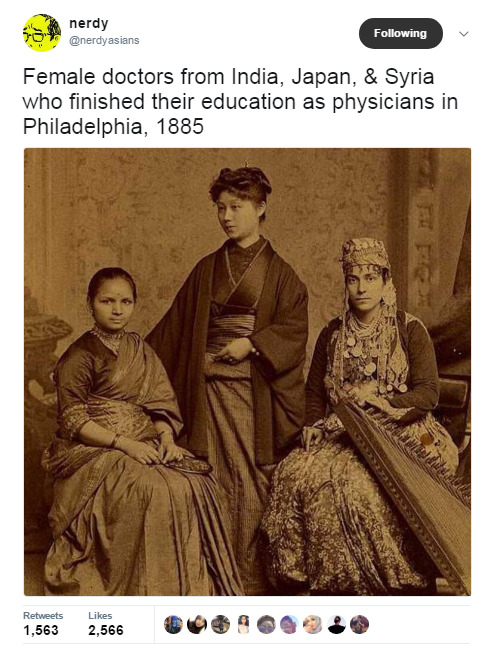
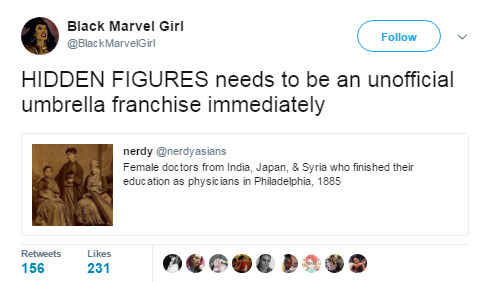
Each one of these women has an amazing story to tell, but we know nothing about them. This history is hidden from us, because they are women of color.
73K notes
·
View notes
Link
0 notes
Link
0 notes
Link
10 notes
·
View notes
Link
Sir Ronald Ross had just returned from an expedition to Sierra Leone. The British doctor had been leading efforts to tackle the malaria that so often killed English colonists in the country, and in December 1899 he gave a lecture to the Liverpool Chamber of Commerce about his experience. In the words of a contemporary report, he argued that “in the coming century, the success of imperialism will depend largely upon success with the microscope”.
Ross, who won the Nobel Prize for Medicine for his malaria research, would later deny he was talking specifically about his own work. But his point neatly summarised how the efforts of British scientists was intertwined with their country’s attempt to conquer a quarter of the world.
Ross was very much a child of empire, born in India and later working there as a surgeon in the imperial army. So when he used a microscope to identify how a dreaded tropical disease was transmitted, he would have realised that his discovery promised to safeguard the health of British troops and officials in the tropics. In turn, this would enable Britain to expand and consolidate its colonial rule.
Ross’s words also suggest how science was used to argue imperialism was morally justified because it reflected British goodwill towards colonised people. It implied that scientific insights could be redeployed to promote superior health, hygiene and sanitation among colonial subjects. Empire was seen as a benevolent, selfless project. As Ross’s fellow Nobel laureate Rudyard Kipling described it, it was the “white man’s burden” to introduce modernity and civilised governance in the colonies.
But science at this time was more than just a practical or ideological tool when it came to empire. Since its birth around the same time as Europeans began conquering other parts of the world, modern Western science was inextricably entangled with colonialism, especially British imperialism. And the legacy of that colonialism still pervades science today.
As a result, recent years have seen an increasing number of calls to “decolonise science”, even going so far as to advocate scrapping the practice and findings of modern science altogether. Tackling the lingering influence of colonialism in science is much needed. But there are also dangers that the more extreme attempts to do so could play into the hands of religious fundamentalists and ultra-nationalists.
We must find a way to remove the inequalities promoted by modern science while making sure its huge potential benefits work for everyone, instead of letting it become a tool for oppression.
130 notes
·
View notes
Photo
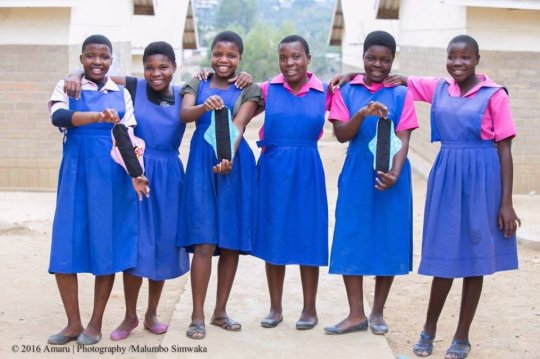
This incredible invention is keeping girls in school
For Trinitas Kunashe, like many girls in Malawi, getting her period was unexpected, unexplained and a burden for her everyday life. Often, girls who do not have access to pads prefer to stay home and out of school for the duration of their periods.

But Trinitas is changing that with her amazing new invention:

Made from bright and comfortable locally-sourced fabrics, Tina Pads are a hit amongst girls in her community. They are waterproof, practical and fun – and most importantly reusable.

Determined to make sure no girl is forced to miss school because of her period, Trinitas is a passionate believer in the power of education to change lives.
#SheWill Succeed
156K notes
·
View notes
Photo
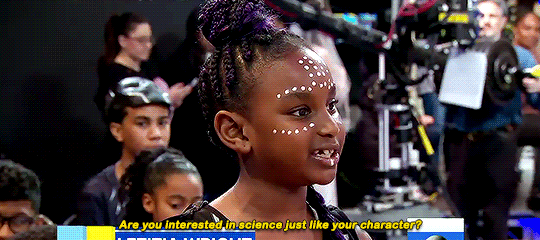

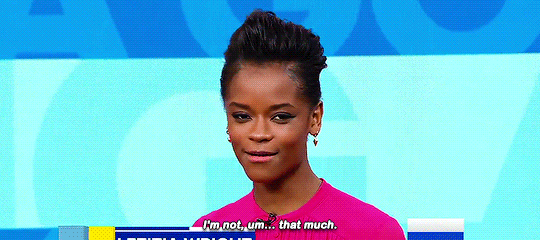

Letitia Wright inspires the next generation of superheroes
7K notes
·
View notes
